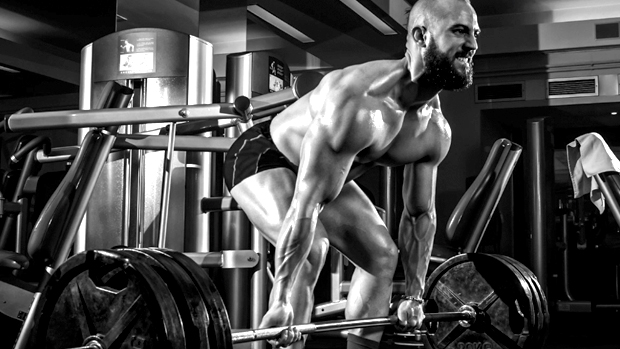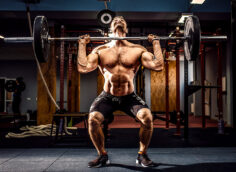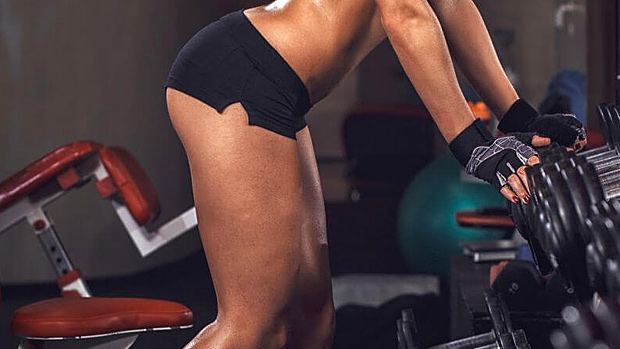New lifters make mistakes all the time. It's natural and part of the learning process. The key to becoming a successful lifter is to correct those mistakes. Here are five you might have missed.
When it comes to pulldowns, chin-ups, rows, or any other upper back dominant movement, you first engage your back muscles by drawing the shoulders away from the load. That's like, rudimentary.
The mistake is in the details:
So, holding a set shoulder position places the rhomboids and lower traps in a long isometric hold that's sure to fade as the set progresses.
Give your muscles the chance to reset in-between reps to allow them to relax, get circulation, and re-contract, which will sustain your efforts. Resetting in-between reps will also help you to develop some much needed scapular mobility.
The idea that all hell breaks loose the second your spine bears load in anything but mild extension is ridiculous. There are entire competition events (think about tire flips in CrossFit or the Atlas stones in strongman) that hinge on a lifter's strength while in spine flexion.
We talk so much about a neutral or slightly extended spine that it can actually cause a bit of harm to a well-intended lifter. To lift the most possible weight, many powerlifters actually find a stronger pulling position when setting up with a rounded thoracic spine.
It reduces the amount of horizontal space needed for a lockout and finishing strength, which can prove advantageous in competition under the heaviest loads.
None of this is to say that missing deadlifts by using unfavorable form is something I endorse to the general public. Sure, keep a neutral spine when possible, but the phobic resistance to any exercise that may involve spinal flexion – like sit-ups or crunches – needs to die as soon as a lifter has reached a decent level of competency and athleticism.
You won't crash and burn the second you do a trunk flexion. It may even do fairly well in strengthening your anterior chain. Just don't be stupid about it.
The same thing applies to squats. Take a good, deep squat as an example. We may be so concerned with our spine staying flat when doing a bodyweight squat that we contort our body through bottom end ranges to respect this "rule."
The result is a high butt and a torso that's pitched way too far forward. Forget about the hips and back for a minute; this flat-spine obsession ignores the fact that the knee joint literally never gets exposure to the deep flexion necessary to get a full ROM. The result is extreme weakness in squats, other loaded movements, and even in day-to-day life. No one wants that.
We strength coaches and experienced lifters all shake our heads when we see a poor quality squat or deadlift, but we never even flinch when we see rotten pull-ups. If I had a Bitcoin for every time I saw a pull-up with excessive body English, thoracic spine flexion, shoulder glide, and knee tuck, I'd be a very rich man.
The kicker is that these same people progress this movement by adding significant loads. Who are they kidding?
Chances are your bodyweight, especially if you weigh over 200 pounds, is more than enough to create an ample challenge for pull-ups and chins, provided you're doing them with good form:
You're hardly training your back anymore if your shoulders aren't able to depress during the movement, your chin "reaches" for the bar, and your range of motion is compromised.
I can't say this enough: Check your ego at the door and stop doing weighted pull-ups. They're hardly a progression if you can't make them look like their bodyweight counterparts.
The idea that you'll always be able to create the perfect tripod position with your feet (where the foot creates an arch and the heel, ball of the foot, and toes are firmly planted on the ground) when squatting or deadlifting with load is something that's more applicable in theory than it is in practice. There just aren't many coaches who have the stones to say it.
Anyone can assume the right foot position when unloaded, and that mistakenly gives many coaches the idea that clients can do their whole workout in socks. Things change when you're trying to move hundreds of pounds, though.
Under challenging loads, the body will start succumbing to its habits and predispositions. If you're someone with foot pronation or fallen arches, that probably means they'll show up to torment you at some point in your ramp toward a heavy squat or pull.
So we can stupidly try to cling to the idea that a shoeless squat is exactly the training tool you need to get better, or we can give our feet the support they need for more stability. We have to decide whether the goal of our workout is to have the best performance by the numbers, or to have a performance that actually addresses our weak links. Decide and adjust accordingly.
The same rings true when discussing the use of belts. First, they're not an accessory. They create a surface for the trunk muscles to brace against, thus helping protect the spine. Wearing a belt is a smart move, especially if you've had back injuries in the past and your goal is to move new PR's and stay healthy for the long term. You're not cheating. You're training.
Now, in both cases, you don't have to abide by these directives all the time. Get the best of both worlds by training to address your weak links by going shoeless or gearless for lower loads, but then put the gear on for the heaviest stuff.
If we want to have a good starting position that sets the tone for a quality deadlift, we've got to start in a position where our lower back has the most control over the pelvis. This will place the lumbar spine in a neutral position or even a mild extension. That's ideal.
When we set up by simply reaching down for the bar and then attempting to get tight by bending the legs and squeezing the chest up high, there are plenty of us who'll have no problem. Some, however (especially taller lifters who have a longer way to go up and down), will be frustrated by their inability to achieve a flat back despite trying hard to do so because of limits to our hamstring flexibility.
The solution is to start setting up from the bottom instead. Roll the weight away from you while settling into a full squat.
It's okay if your back rounds too. As you roll the bar back in towards you, get tight and move up into your starting position.
This change will allow the hamstrings to relax when you're at the very bottom (at bottom depth, you won't be nearly as stretched), giving the low back a fighting chance to actually extend without having to deal with a tug-of-war for real estate. Pulling up into your start position from there will prove much easier.
Now don't think you've caught me in a contradiction here because earlier I said not to freak out about deviating from a neutral spinal position! My point was that you should keep a neutral spine when possible, but not follow the advice to a slavish degree when it comes to sit-ups, crunches, or yes, the occasional





